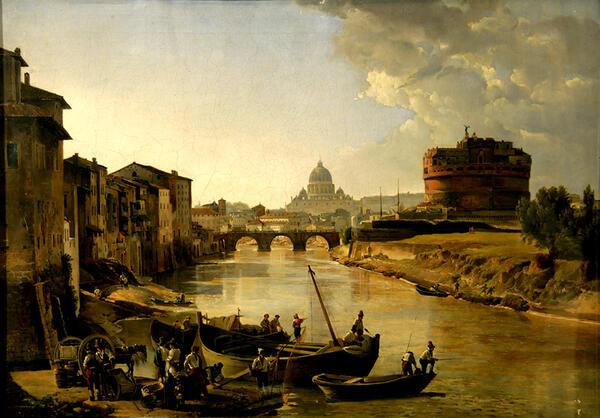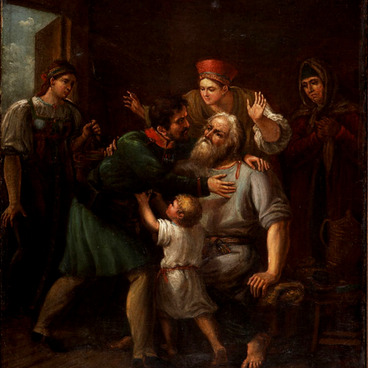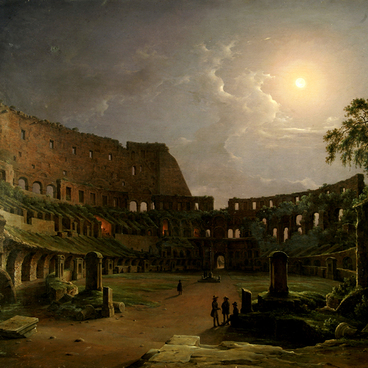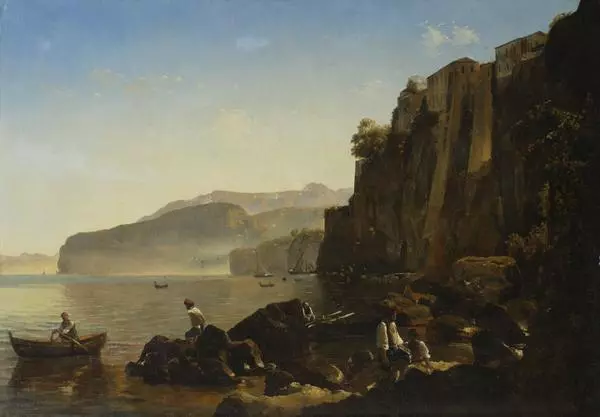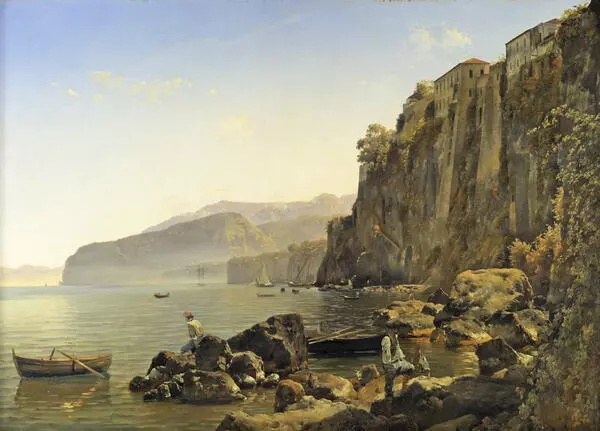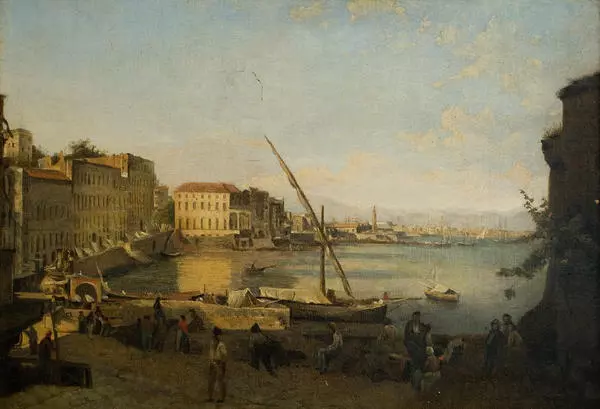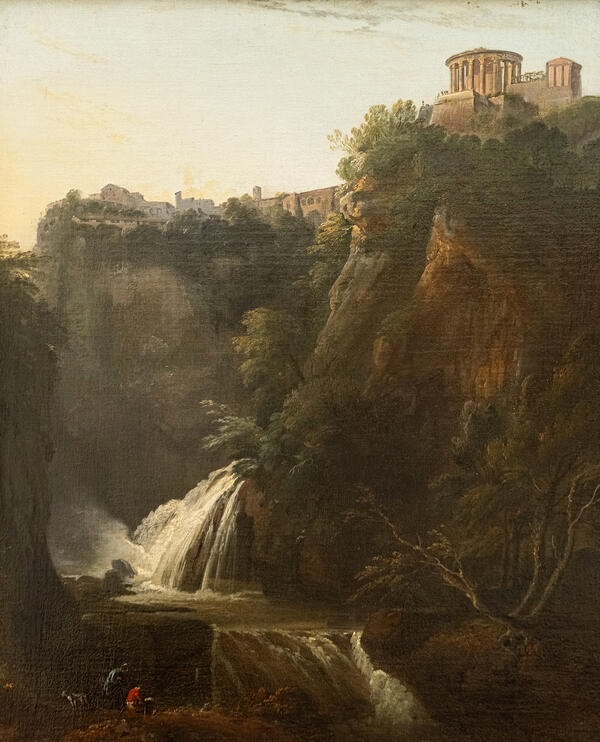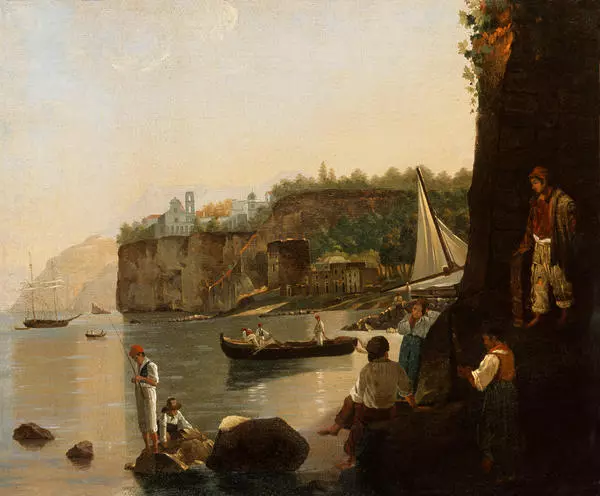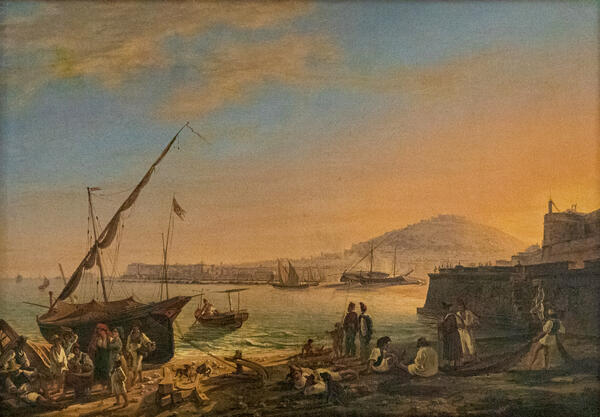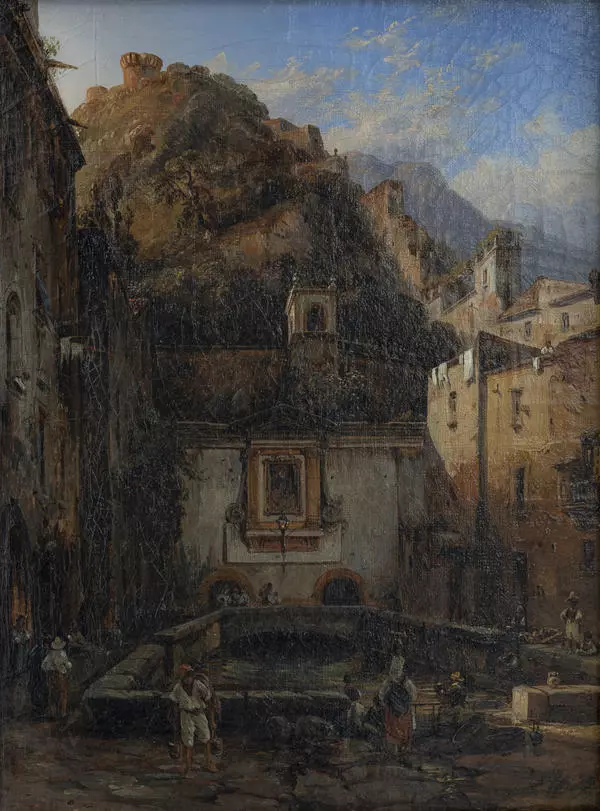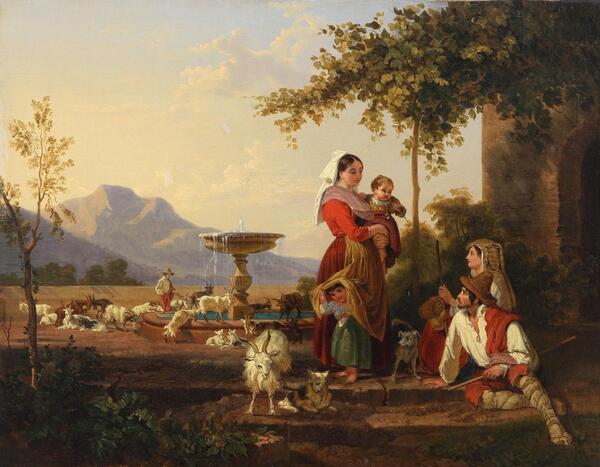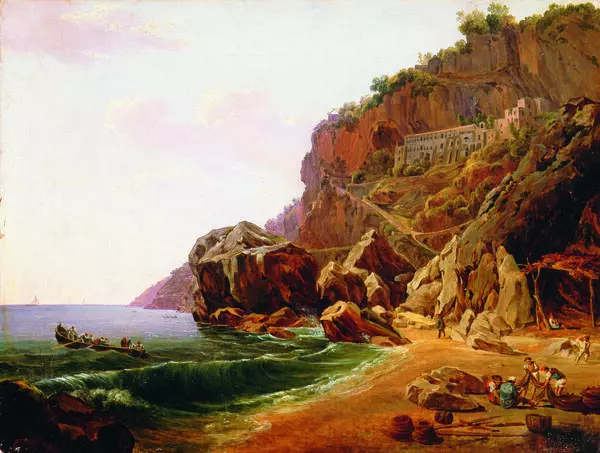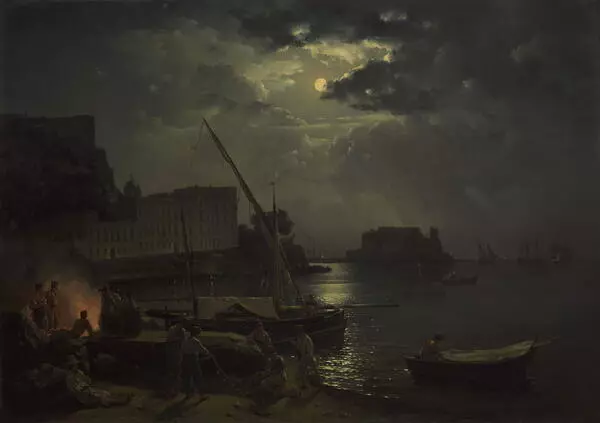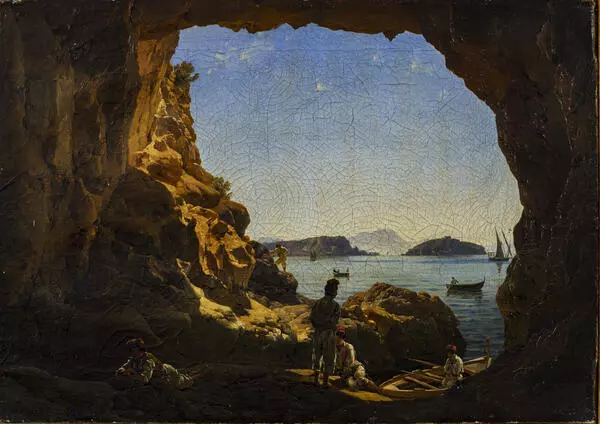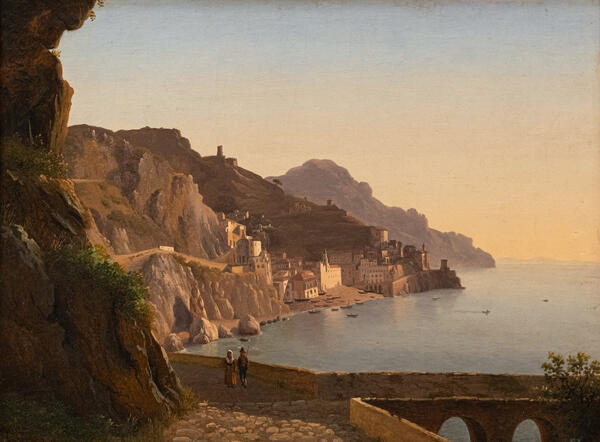The painting “New Rome. Castel Sant”Angelo” was created by Sylvester Shchedrin in Italy in 1825. It is part of the similarly-named series painted by the artist between 1821-1825. This work gained immense popularity and brought European fame to the young artist. Shchedrin repeatedly received orders to paint this particular landscape. Avoiding copying, he turned those repetitions into an endless study of nature, each time experimenting with lighting and the state of nature. The view of the Tiber quay was located not far from the house of the artist. From here there was a beautiful view of the old part of the city. Famous Roman buildings, Castel Sant’Angelo, Cathedral of Saint Peter and Vatican Palace, are reproduced with extreme precision in the landscape. The artist does not focus special attention on them, but only depicts them as part of the panorama he saw. The houses of the urban poor, ‘new’ Rome, are built along the left bank of the Tiber river. In the foreground, fishermen have settled down near the water for their usual occupation.
Working on this series, Shchedrin discovered the variety of open-air painting. Already in this landscape, the artist’s palette was noticeably brighter and renewed, the dark brown tones of his first works replaced by light and cold ones. The city in the painting is filled with light and air. The city skyline in the background is painted in pastel colors. The viewer can see the light facades of buildings, ocher tiled roofs, clouds of green crowns, and the endless blue sky. Shchedrin not only saw all the beauty of Rome, he also perfectly reproduced it in his canvases.
In this work, as a representative of the classical academy, Shchedrin had to revise the clearly clichéd scheme of the view landscape and elements of the fictional landscape. In “New Rome” he managed to show the view of a modern city filled with life. In the Eternal City of Shchedrin, the great past, the present, and the daily course of life are harmoniously combined.
Working on this series, Shchedrin discovered the variety of open-air painting. Already in this landscape, the artist’s palette was noticeably brighter and renewed, the dark brown tones of his first works replaced by light and cold ones. The city in the painting is filled with light and air. The city skyline in the background is painted in pastel colors. The viewer can see the light facades of buildings, ocher tiled roofs, clouds of green crowns, and the endless blue sky. Shchedrin not only saw all the beauty of Rome, he also perfectly reproduced it in his canvases.
In this work, as a representative of the classical academy, Shchedrin had to revise the clearly clichéd scheme of the view landscape and elements of the fictional landscape. In “New Rome” he managed to show the view of a modern city filled with life. In the Eternal City of Shchedrin, the great past, the present, and the daily course of life are harmoniously combined.

